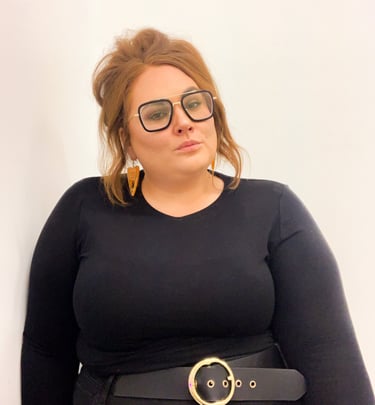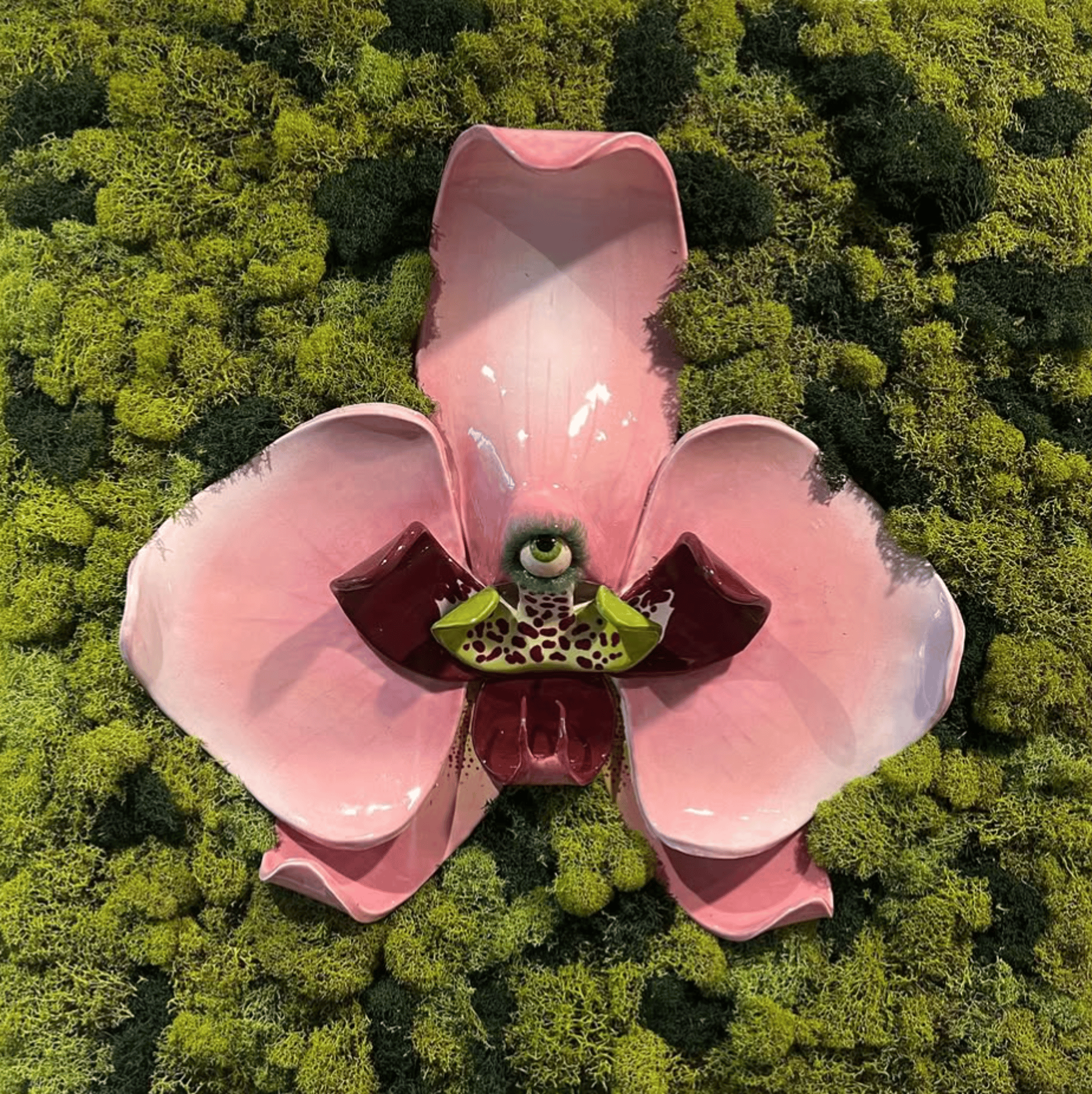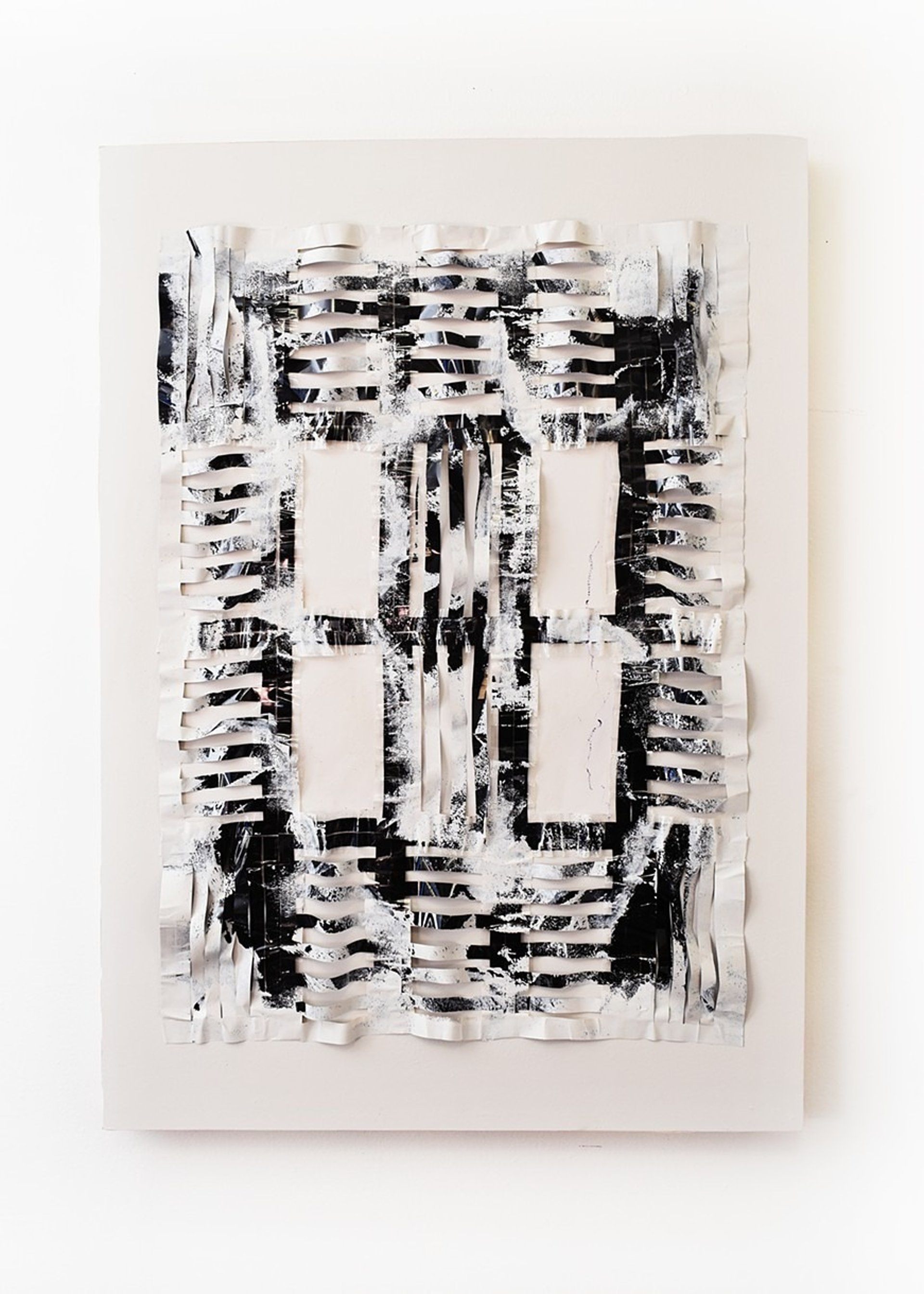
Rebecca Griffith: Obsolete Objects and Lasting Memories
For her October 2025 solo exhibition Video Magic: 1996, Rebecca Griffith activated Art City’s mair gallery with video rental ephemera. For the millennials among us, the inherent nostalgia bound to the physicality of VHS tape transports us to our childhood. For Griffith, the material is a direct reference to growing up with and eventually becoming the caretaker of her mother, who ran a video rental store in the early 1990s named Video Magic.
In Video Magic: 1996, Griffith’s work examines the intersection between memory and material. Pop culture doesn’t exist in the background of our lives for pure entertainment, instead the media we consume reflects who we are, how we process emotion, and what we value. In Video Magic: 1996, VHS tapes become quilts and fictional stories blur into lived realities.
Here, Griffith discusses the exhibition and her practice at large.Here, the artist discusses her creative process, points of reference, and hopes to communicate across both physical and intellectual ideas via her art.
NEW GALLERY: What led to the work we see in Video Magic: 1996?
REBECCA GRIFFITH: It was born in graduate school, while reflecting upon my relationship with my mother.
My mother was diagnosed with multiple sclerosis when I was six years old in 1996. At that time she ran the local store called Video Magic, and we had to close the store following her diagnosis. With that, a lot of the remnants of the business came into our house. We had posters all around, hundreds of VHS tapes and Nintendo 64 games.
NG: It’s a familiar scenario people find themselves in. A loved one falls ill, objects become a burden but also hold memories.
RG: These tapes were comfort items. That idea combined with evoking a sense of home, going back to the caregiving, it all came together in this idea of bedding. That's kind of where quilting the VHS tapes started.
In cutting up the film and resequencing the information of the cassette, I’m also resequencing the memory that the cassette holds. I'm degrading it as I touch it.
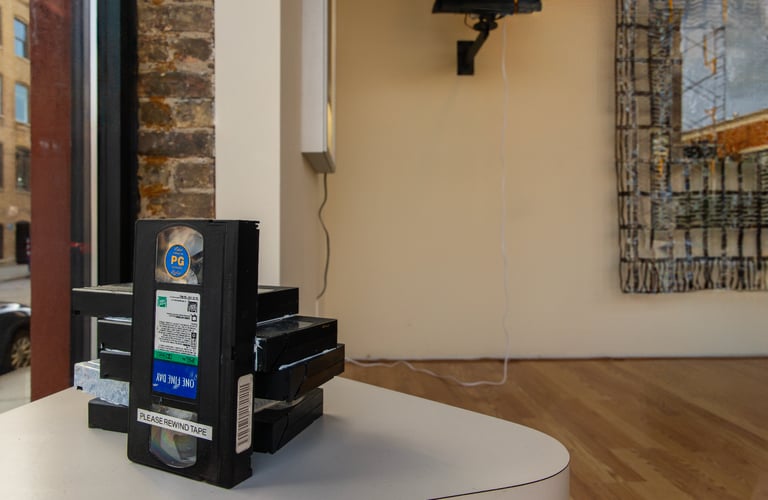

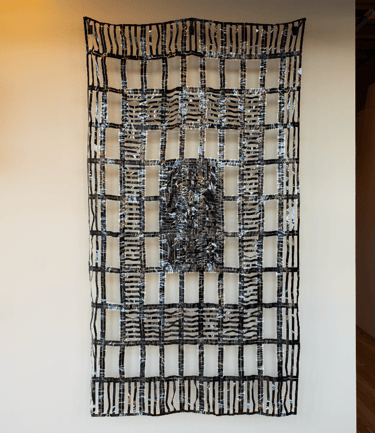

NG: Are there outside inspirations, sources of ideas, or imagery that get your creative process in motion?
RG: I'm always watching movies, and I'm a re-watcher. The vibes of whatever I'm watching can kind of sneak in, I would say. In the past year or so, I've been really inspired by ’80s splash and Memphis style. I just think it's so ridiculous. Combining these ideas and styles has really been interesting.
And now I’m decorating and nesting into my own space and home, so I've been using a lot of home materials, like trim and wallpaper. The influential women in my life claimed their identity through the home, so that’s a big point of reference.
NG: I was just going to ask you about that. Your work of course calls the idea of home to mind with watching VHS tapes, but also the quilting technique you use. Do you feel that moving through the world as a feminine person influences your work?
RG: Oh, yeah, definitely. I actually did a two person exhibition where we explored ideas of anxiety, aging, depression, mental illness and how each of these informs our work. The title of the exhibition was There Is Time To Grow Old, which is from the movie Who's Afraid of Virginia Woolf? I explored the themes through the movie What Ever Happened To Baby Jane?, with specific focus on Baby Jane and the idea of dependency, and how society views women not as useful as we age. I was also looking at the careers of Bette Davis and Joan Crawford and how they revamped themselves through horror movies later on in their careers in order to stay relevant.
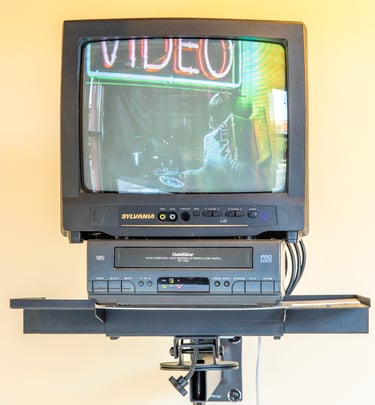

NG: One of the most extreme ways to look at the commodification of female existence through these iconic Hollywood legends.
What themes, ideas, or opinions do you hope viewers access via Video Magic: 1996?
RG: Art is made with a certain accessibility in mind. In this show there's the pop culture iconography of scream and the VHS tape, the wallpaper VHS and rugs. If it's taken simply as a nostalgic reflection, I am absolutely okay with that. Especially in today’s climate—finding any sense of joy is a positive.
Somebody actually picked up one of the VHS tapes off the floor at the opening! People were looking at me like, “Is that okay?” And I was like, “I guess so. He's doing it!” [laughs] It definitely activated this weird, pure sense of childhood wonder in this stranger that I witnessed.
As for the thematic side of the show and what I hope viewers see, is that we are all caregivers at one point. Whether it's thrown upon us or not. I think having those kinds of layers and hopefully being able to relate on a human level is ultimately present in the show.
NG: Do you have a sense of what might be next around the corner for your creative practice?
RG: I have a three person exhibition coming up with Allen Moore and Noah Kashiani at Northeastern University in March 2026. Morning Cartoons and Cereal will focus on childhood wonder and how we are each searching for that feeling and re-collecting these items. My work will focus more on cartoons, toys, and beauty products for that show.
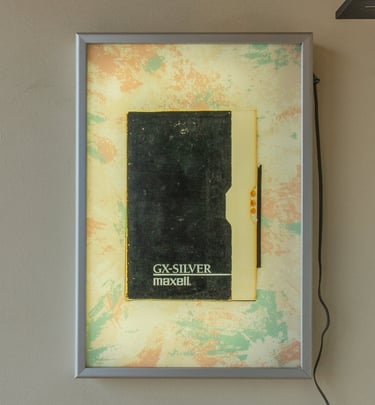


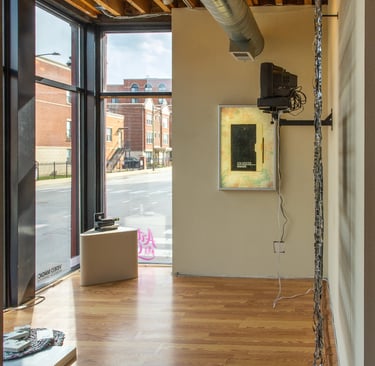
Rebecca Griffith is an interdisciplinary artist, educator, and manager of Purple Window Gallery. Her curatorial practice is centered around community outreach and public initiatives that democratize the art world and create a sense of belonging, bringing together artists and makers across the Midwest. Griffith has exhibited at Unpacked Mobile Gallery (Chicago), Women Made Gallery (Chicago), Heaven Gallery (Chicago), and Ann Arbor Art Center (Michigan), among other Midwest galleries and cultural institutions. Griffith earned her B.S.Ed. from Northern Illinois University in 2013 and her M.F.A. from Northern Illinois University in 2018.

